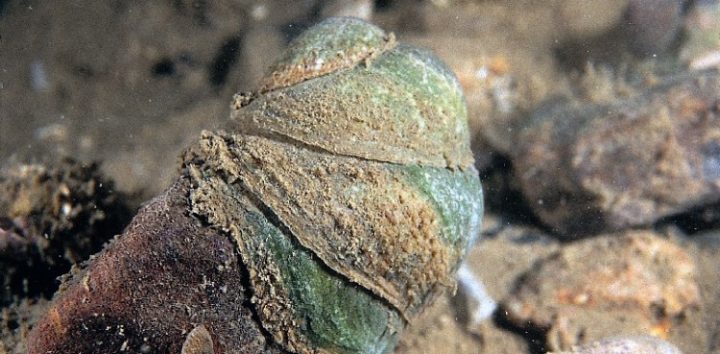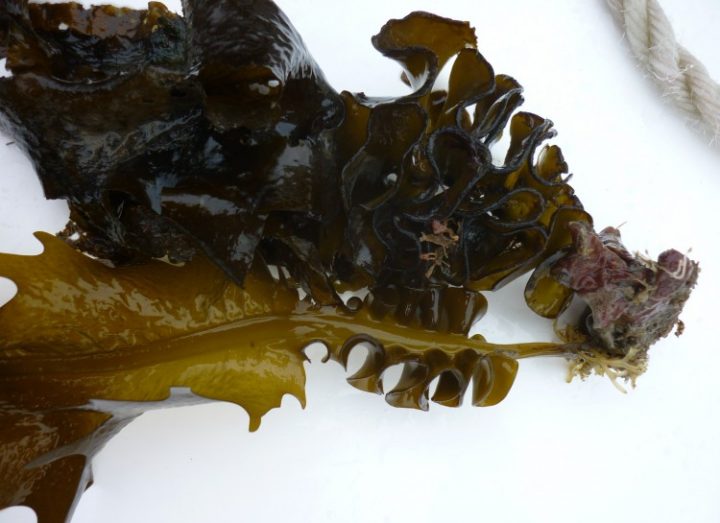Invasive species
Invasive species, alien species, non native species; it all sounds rather nasty? A bit like HG Wells’s apocalyptic novel detailing the Martians popping down for a bit of world domination. However, there are good and justified reasons why we should be concerned about the introduction of new and potentially damaging species to our native habitats. However, what I hope to illustrate is that it is all a question of balance and managing the rate of change.
Take what we think of as our native habitats. Just how “natural” do you really suppose they are and what do we mean by the word natural? Around 20,000 years ago, at the end of the last ice age, the world around us would have looked very different. It is possible that many of the species we recognise today would not have been around and were in fact “aliens” themselves, moving into the warming seas, migrating from more southerly areas. This natural movement of species from one place to another happens all the time. Juvenile forms of what we commonly think of as sessile species, sponges, soft corals etc., are generally mobile and move as plankton through the world’s oceans.
Indeed, this process is still happened today and marine biologists were delighted to find a very rare cup coral (Leptopsammia pruvoti) growing in a few isolated spots round the south west. Rare that is for south-western England as it is more commonly thought of as a Mediterranean species. However, a few planktonic larvae managed to hitch a ride on the ocean currents and settled here to add to our biodiversity.
However, not all new arrivals are thought of with such fondness. One invasive species that was viewed with trepidation when it was first spotted growing in our coastal waters was Sargassum muticum or wire weed. This brown algae was first recorded near the Solent in the early 1970s. It is fast growing and forms dense canopies, its air filled bladders holding its fronds up in the water column. Since then it has spread round the coast of the UK and can now be found in most places where there are suitable holdfasts in shallow coastal waters and rock pools. The fear was that because it grows very quickly and forms large fronds that it would smother our more normal coastal algal species and even damage our seagrass beds. None of this has transpired and now Sargassum, here to stay, has established itself as part of our coastal biodiversity.
 Slipper Limpet
Slipper Limpet
Another recent arrival to our waters is the slipper limpet Crepidula fornicata. Again, it is believed to have been first recorded in the Solent but, due to it being fast growing, a rapid reproducer and having no natural predators in our waters, it has spread round our southern coasts and is now only limited in its distribution by the colder water temperatures further north. Although, like Leptopsammia and Sargassum, Crepidula is here to stay, it is far more of a problem. Because it has no natural predators, Crepidula forms dense carpets of animals and has a particular liking for our native shellfish beds and in particular, oyster beds.
We have populations of the native European oyster, Ostrea edulis on both the Fal and Helford. Both fisheries have a major problem with Crepidula and whilst there have been various schemes proposed to remove them from the fishery, none of these projects has been successful. Given their abundance you might think that they would be an excellent fishery in their own right. However, not even chefs as talented as Rick Stein have managed to find a way of making them taste edible!
 Wakame. Photo by Lisa Rennocks
Wakame. Photo by Lisa Rennocks
Unfortunately, the influx does not end with there. A recent project has begun to make a record of marine invasive species here in Cornwall and hopefully slow the spread of this next round of unwanted plants and animals. The project, led by Cornwall Wildlife Trust, recently found and removed another invasive brown alga from a site in the Fal estuary. Wakame, Undaria pinnatifida, in common with our native kelps grows in the clear waters round the south west. It is also fast growing and could crowd out some of these native species.
Another potentially damaging species that has made it into English waters but has yet to be recorded in Cornwall is Didemnum vexillum. This species of sea squirt has caused damage to the infrastructure of ports, marinas and aquaculture farms. However, with the co-operation of our harbour authorities and marinas, we are maintaining a watch for this and it is hoped that when it does eventually arrive here, we will be able to take action quickly to stop it from becoming established.
So why is it that we celebrate the arrival of Leptopsammia and yet curse the likes of Sargassum, Crepidula, Undaria and Didemnum?
It is all about the rate of change and the impact, that these species have on our native species. As mentioned, Leptopsammia arrived “naturally”, is here in small numbers and adds to our wonderfully rich and diverse marine habitats. The other invasive species were introduced artificially; possibly hitching a ride on shellfish imported for aquaculture, spread rapidly in great numbers and detract from our biodiversity. Eventually, our habitats will change as a result of drivers like climate change and equilibrium will be re-established, but in the meantime we need to be far more careful in our introduction and management of these aliens.
Kevan Cook, Lead marine advisor, Natural England
Investigating Invasives
Both native marine life and marine based industries are under increasing pressure from the introduction of non-native invasive species. ERCCIS and Cornwall Wildlife Trust are collaborating with associated organisations, including the Marine Biological Association, to uncover which invasive species have already arrived and establish the ones that pose a significant threat should they arrive. For more information about the project and how you could help please see: www.erccis.co.uk/invasivespecies/Investigate_Invasives_Marine.
Extract from HVMCA newsletter No.42 Spring 2011







